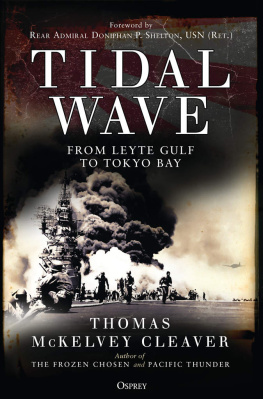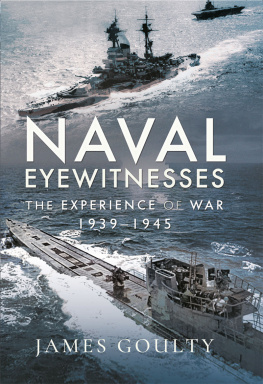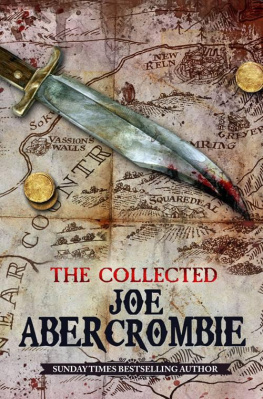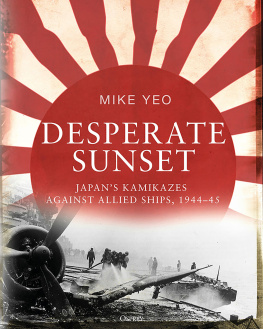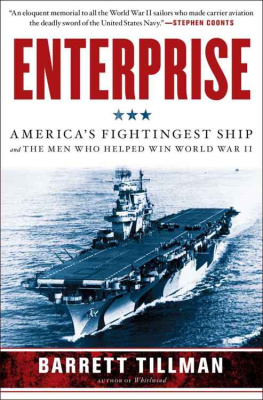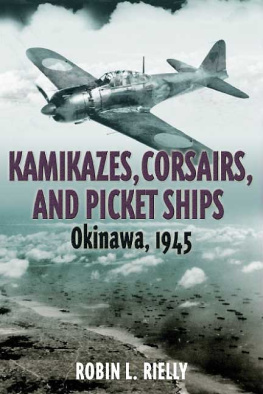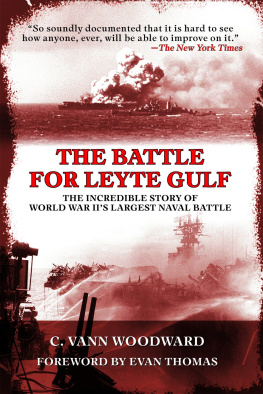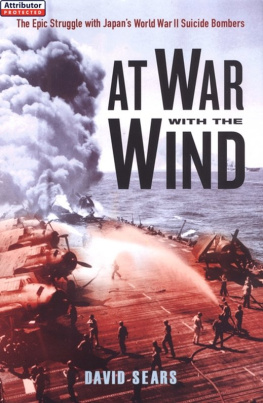Little Ship,
Big War
Little Ship,
Big War
THE SAGA OF DE343
Commander
Edward P. Stafford,
USN (Ret.)

BLUEJACKET BOOKS
NAVAL INSTITUTE PRESS
ANNAPOLIS, MARYLAND
This book has been brought to publication by the generous assistance of
Marguerite and Gerry Lenfest.
Naval Institute Press
291 Wood Road
Annapolis, MD 21402
1984 by Edward P. Stafford
All rights reserved. No part of this book may be reproduced or utilized in any form or by any means, electronic or mechanical, including photocopying and recording, or by any information storage and retrieval system, without permission in writing from the publisher.
First Bluejacket Books printing, 2000
ISBN 9781-61251193-1
Book design by Bernard Schleifer
This book is for all Destroyer-escort sailors everywhere,
a special breed of stalwart men who sailed
to war in little ships and held the seas for freedom
when the need was there.
TO TELL A TRUE sea story about a real ship, the first thing the storyteller must have is her deck log. It forms the skeletal structure of the story, providing not only her precise itinerary, but the dates and times of all important events, and even what the weather was like. In the relation of the story it must be constantly referred to. Abercrombies log is rightfully in the custody of the National Archives in Washington, and is available to be inspected there. But it may not be removed from the premises, a decided disadvantage to someone attempting to write a book about her, sixty-five miles away. By some near-miracle of interest, influence, initiative and ingenuity, my friend William W. Watkins, formally an Abercrombie radarman, was able to provide me with my own working copy of Abercrombies log, and for that I am hugely in his debt.
A source nearly as essential as the deck log is the log of incoming and outgoing visual (flashing-light and semaphore) signals. It provides a wealth of information and detail, formal and informal, available nowhere else, and helps to put flesh on the bare bones of the deck log. For that most valuable document I am indebted to former signalman (later Master Chief Quartermaster) Raymond J. Shiel, who in a true labor of love copied the voluminous official document in his own hand while Abercrombie was being decommissioned back in early 1946, and then highlighted, color coded and annotated it for my benefit.
Details of combat with the enemy, and the forces involved, are contained in the Action Reports and War Diaries submitted at the time. For those reports, for Abercrombie as well as for the other ships mentioned in the text, I am indebted (for the third time since 1958) to Dr. Dean C. Allard, Director of the Operational Archives Branch of the Naval Historical Center in Washington, D.C., and to his extremely efficient, helpful and courteous staff.
The book, as an intimate, detailed account of one small ship engaged in a very big war, could not have been written without the active help of the men who manned and fought her. Seventy-six of the former ships company returned my questionnaires, thirty submitted to lengthy interviews either in person or by phone, sixteen furnished personal (and illegal) logs or diaries, and eleven sent me tape cassettes detailing their memories of those eventful twenty months nearly forty years ago. In addition, the forty-nine former crewmen who gathered in Knoxville, Tennessee, in the spring of 1983 cheerfully responded to a list of questions I had prepared for the occasion, and thus straightened out a number of facts, anecdotes and incidents which otherwise would have been lacking in the accuracy which is so essential to a book like this. Special thanks is due to Thomas M. Rutters for coming up with an old address book from his time in DE343, which in a kind of geometrical progression has enabled us to locate 129 of Abercrombies crew plus another thirty-one who, sadly, have not survived. Special thanks is also due former chief gunners mate James A. Ramsey, who, bless him, apparently never threw away anything relating to the Abercrombie. He furnished me crew lists, watch bills, orders to gunnery ranges ashore, a series of amusing anecdotes, and even the official notice of the passing of Butch the mascot.
I am grateful to the following gentlemen for taking the time to share with me their experiences on Abercrombies sister DEs: Francis Kilchenstein of the Suesens; John E. Red Harrington, Robert Mel Harden, Jack K. Moore, Jack Yusen, Lloyd A. Gurnett and William S. Burton of the Roberts; Abbott M. Gibney and John F. Murphy of the Oberrender; and William A. Rogers of the Wann. Mr. Benjamin D. Hyde, former Commanding Officer of the APD Bunch, also was kind enough to furnish me details of the loss of Dickerson (APD21) and of the subsequent rescue of her people by UDT21 embarked in his ship. Rear Admiral T. C. Phifer, former Commander of Abercrombies Escort Division 69, was kind enough to send me his excellent tape describing at first hand the battle off Samar, as well as answer a number of questions for me by phone.
For the Prologue, William A. Tunstall, formerly of the USS Hornet and plane captain of William W. Abercrombies TBD Devastator at Midway, provided his unique memories of Ensign Abercrombie and Bernard Phelps, his radioman, on the morning of the battle.
And for the Epilogue, I am grateful to Mr. John Riley, who is writing a comprehensive book about destroyer escorts in World War II for the Naval Historical Center, for coming up with documents that led me to Rear Admiral Kenneth C. Wallace, former skipper of the Long Beach, and to Captain Robert S. Salin, former CO. of Attack Squadron 93, who in turn described the final hours of the hulk which had once been DE343.
In the fall of 1982 I made a trip to Galveston, Texas, to refresh my memory by visiting the USS Stewart (DE258), which is, as far as I know, the only remaining DE. The Stewart is preserved on land in Sea Wolf Park in Galveston, and the man in charge of her is Charles Chuck Fulmer. Chuck Fulmer saved what was a largely wasted trip from Baltimore to Galveston by opening up all the very many Stewart compartments, including the pilothouse and wardroom, which are not open to visitors, and by spending several hours accompanying me on a tour of his ship. I am most appreciative.
Finally I am indebted to my good friend master chief gunners mate Gale Habets for 19441945-vintage ordnance and gunnery publications and for training manuals that helped me immeasurably in describing the operations of Abercrombies guns, and for his ready and obliging availability as my expert, consultant and adviser in gunnery matters.
Contents
IT ALL BEGAN, oddly enough, with a lumbering, obsolescent airplane which on Thursday, the fourth of June 1942, should never have been where it was, or doing what it was doing. The planes pilot was a big, quiet, twenty-five-year-old ensign who had been an officer and a Naval Aviator for less than a year. He was proud to be from Kansas City, and each day when his carriers noon position was posted, he had the same question, How far is that from Kansas City? His name was William Warner Abercrombie, and he was known to his fellow pilots of Torpedo Squadron Eight on the carrier USS
Next page

